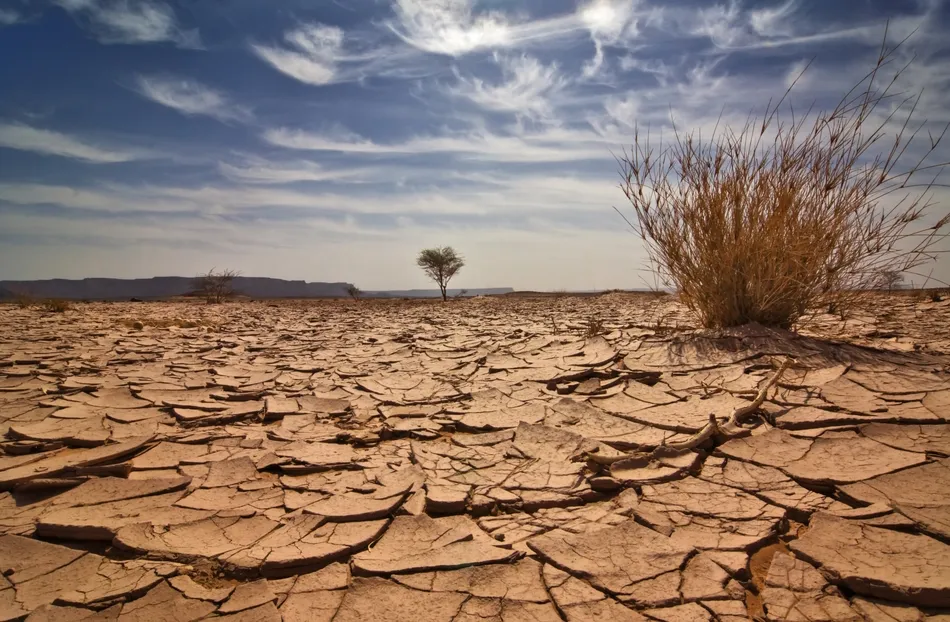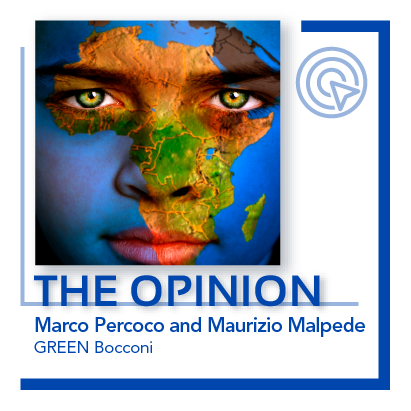
Water Risks Becoming a Mirage
There's not much water going under bridges anymore. The drought of 2022 broke all records, but the worst is not over: a March 2023 report by the Joint Research Center of the European Union shows that much of the Continent continues to be affected by weather anomalies related to soil moisture and low water levels of rivers, with the impact of drought already visible in France, Spain and Italy, where in 2022 rainfall fell by 40% compared to the ten-year average. There are negative cascade effects on the water supply, agricultural production and hydroelectric energy generation. The collapse in rainfall has affected several areas of Europe over the last year, the JRC scientists note, and "the current situation could become critical in the coming months if temperature and rainfall anomalies persist in the spring of 2023," especially for the Mediterranean region that could experience a new "extreme" summer this year.
Bosetti: intensity of droughts is bound to increase
"Medium-term forecasts show us that the average duration and intensity of droughts is destined to increase, both in Central and Southern Europe," explains Valentina Bosetti, Professor of Environmental and Climate Change Economics at Bocconi University. A forecast that will turn into certainty if average temperatures increase by 3-4°C, but also if the limits of the Paris Agreement are maintained, which provide for governments to act in order to keep the increase in global average temperatures well below 2°C above pre-industrial levels and to continue efforts to limit it to 1.5 degrees. "The Mediterranean region is particularly compromised mainly due to drought: it is not only a problem of rainfall, but also of soil evapotranspiration," explains Bosetti. "It's very hot and the soil releases more water vapor." If predicting precipitation accurately is difficult for climatologists, notes the professor, "we are certain that temperatures will increase, therefore the evapotranspiration component of soils is set to increase in the coming years. With a clear economic impact: an Italian study has calculated the economic effects induced by drought on the Italian economy, estimating losses between €0.5 and 1.75 billion for the 2001-2016 period, with the effects of lower agricultural revenue throughout the economy."
How to adapt to climate change
Mitigation and adaptation measures can be put in place to deal with the higher occurrence of drought. "Mitigating means cutting emissions: it is done for everyone's benefit, but to have effects, others need to do the same compliance with international agreements. Adaptation, on the other hand, depends on the choice of the individual country: it doesn't matter whether the others do it or not, a series of actions must be planned and implemented to adapt to the changing climatic conditions." The adaptation strategies are most varied: "The EU," remarks Bosetti, "provides a general framework, then each country must set its own guidelines for its own context. To fend off the effects of the heat wave, a big city can plant may trees to lower the temperature of the asphalt and building codes can be changed to build architectures that mitigate heat. In agriculture, technology can be exploited to select seeds that are more resistant to drought or grow crops that can survive a prolonged absence of humidity."
In December 2022, Italy updated its National Climate Change Adaptation Plan, signaling commitment to the implementation of: soft policy measures, such as policies and laws that aim to change lifestyles; green measures, with actions to improve the resilience of ecosystems; infrastructural and technological solutions to make buildings and networks more efficient. "In many European countries," says Bosetti, "adaptation plans have not yet found completion, but they need be done so as not to make the situation worse: even if we are virtuous, we will see major climate change because it is the last few decades of emissions that have exposed us to this danger." According to the professor, states such as China and India have also embarked on a path that will lead them to cut emissions to lower temperatures: "China and India will not continue to behave as they do now: by 2070 India will reach net-zero, while China's emissions will peak in 5 years and go down to zero by 2060. It is no longer true that they do nothing because they have made a very clear commitment and China has invested exponentially in renewables, so much so that the increase in gas prices, which started before the war in Ukraine, is also due to their new strategy for the energy mix that now includes less coal and more gas to start reducing emissions."
Fiorillo: regenerative agriculture is more resilient
Farmers were the first to feel the impact of hotter weather and less water available for cultivations. "We shouldn't think that 2022 was the hottest summer of the last hundred years, but that it will be the coolest of the next hundred. The situation is truly dramatic," underlines Vitaliano Fiorillo, Director of AgriLab, SDA Bocconi School of Management. "Agriculture would have been much more resilient if we had already started implementing sustainable and regenerative agriculture practices ten years ago, but only now it is becoming part of the European Union's strategy." Through crop rotation, the reduction of soil tillage and continuous covering with plants and foliage, regenerative agriculture techniques make it possible to increase soil fertility while limiting water consumption. "This type of cultivation starts from the assumption that work in the fields is not opposed to the ecosystem but is an integral part of it. Regenerative agriculture is also capable of absorbing CO2 from the atmosphere, storing it in the soil and making it available to plants in the form of carbon," explains Fiorillo.
In short, a successful revolution was set aside for a decade only for "cultural reasons," and has "remained confined to universities." Since World War II, he adds, "agriculture has been based on a Fordist model. We thought that nature was not efficient and we applied to it the logic of the industrial system, sowing and harvesting according to our wishes with more efficient genetics and additional mechanization of agricultural labor. A model supported by Europe's Common Agricultural Policy since the 1960s which has strengthened this idea of industrial agriculture with price controls, removing elements of agricultural entrepreneurs' know-how. In Italy, in particular, people have been very good at making the most of good starting conditions: so as long as things went well there was a lot of land exploitation and no search for new methods for when things no longer work."
A new agriculture or different products
Yet betting on new field cropping techniques can give "amazing" results compared to traditional agriculture. "In a period between three and ten years, depending on the type of soil and conditions, regenerative agriculture allows for yields equal to conventional agriculture, if not higher, with a concomitant reduction in the use of synthetic fertilizers larger than 90%," underlines Fiorillo. "A paper that we are about to publish with Università Cattolica in Milan demonstrates that regenerative agriculture is enormously more efficient than conventional agriculture: in terms of land use, efficiency and quality measured on the basis of the objectives set by the European Union." Change is no longer an option, notes the researcher: "Traditional agriculture is in no way ready to absorb the impact of climate change and we have already wasted too much time. Now it is necessary to find a new path, and how this happens will depend on various factors: those with investment capacity and foresight will venture into regenerative agriculture and those who have already been brought to their knees by the drought will probably leave the business. Things will be different for those who have financial resources but are already in an unrecoverable situation: these are entrepreneurs who will seek long-run adaptation; they will not change the mode of agriculture but the product to be marketed, ceasing to grow avocados and betting on peanuts or dates," quips Fiorillo.
